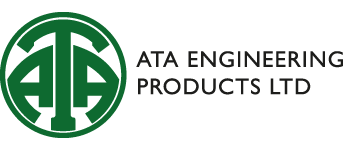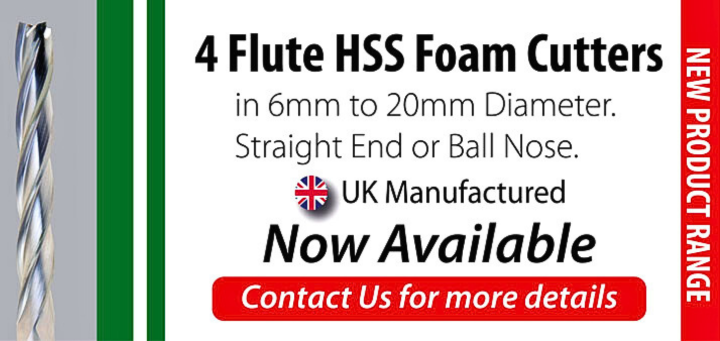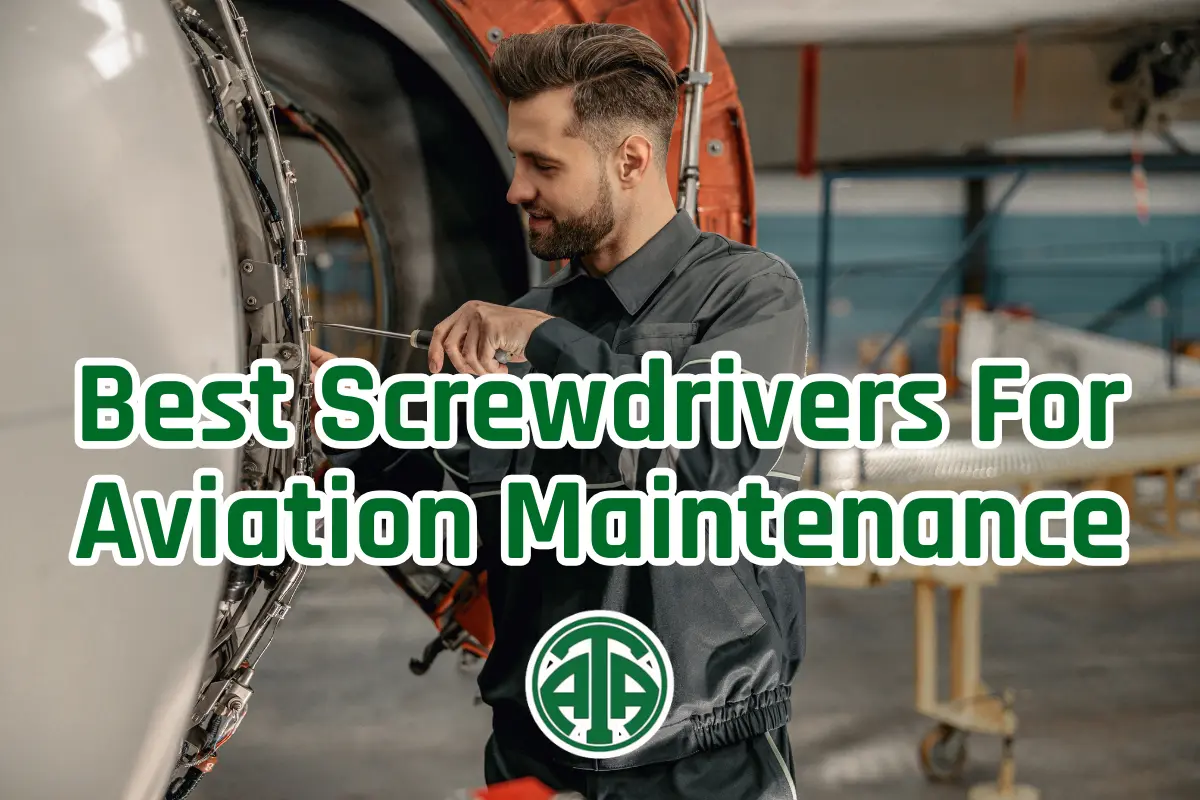Aircraft maintenance environments push tools to their limits. Technicians need screwdrivers that not only engage with a wide variety of fasteners but also withstand repetitive high-torque demands, reduce operator fatigue, and reach into the kind of tight spaces commercial toolkits weren’t built for.
As noted in Kitplanes’ deep dive into aviation screwdrivers, using the wrong driver can lead to cam-out, damaged fasteners, and unsafe assemblies.
This guide cuts through the noise to help engineers, technicians, and procurement leads identify what makes a screwdriver truly aviation-grade and spotlight the ATA screwdriving bits designed to meet those exacting standards.
Key types of screwdrivers in aviation
1. Phillips (#1, #2)
Phillips screwdrivers are the backbone of aviation maintenance. You’ll find them everywhere—from aircraft panels and access hatches to general-purpose fastening points. Size #2 is the industry workhorse, prized for its compatibility and ease of use.
ATA’s ACR® (Anti-Camout Ribs) bits provide tighter engagement, reduce slip, and are built to handle aviation torque tolerances with precision.
2. Reed & Prince (Frearson)
Often found on legacy or military-spec aircraft, Reed & Prince bits offer a sharper cross profile than Phillips, allowing for more precise torque transfer.
While they look similar, they’re not interchangeable—mixing them up can damage fasteners or tools.
3. Flat (Slotted)
Still used in older airframes and trim work, slotted screws demand exact blade-to-slot matching. Improper fit risks cam-out or gouging soft aluminum surfaces—something no mechanic wants.
Recommended: ATA Slotted Bits
Precision-ground for aerospace-grade performance, ATA’s slotted bits maintain engagement and reduce marring on sensitive fasteners. Email for a competitive quote.
4. Torx®
Star-shaped and built for torque.
Torx® fasteners are commonly used in avionics and structural assemblies where vibration resistance is key. These bits distribute force across more surface area, reducing the risk of cam-out and damage.
ATA Torx® Bits are engineered for consistent torque delivery and minimal wear. These are a staple in modern aviation maintenance.
5. Allen (Socket/Hex)
From electronic enclosures to structural supports, Allen (or hex) screws appear throughout aircraft systems. Available in both SAE and metric sizes, they’re key to accessing socket-head fasteners with minimal clearance. Email for a competitive quote.
6. Offset & Specialty Drivers
Working in an avionics bay? Inside a fuselage? Welcome to tight-space tooling.
Offset drivers and specialty configurations (like L-handles or right-angle adaptors) are essential where traditional tools simply won’t fit. ATA Insert Bit Holders and Extensions are engineered for reach, stability, and grip.
Features of the best aviation screwdrivers
What elevates a screwdriver from passable to professional is its construction—precision, durability, and ergonomics.
A. Precision Fit
In aerospace, a stripped screw head can stall maintenance and compromise safety. That’s why bit-to-screw engagement must be exact. A sloppy fit leads to cam-out—where the bit slips out of the fastener—and that’s not something you want mid-repair.
ATA’s aerospace screwdriving bits are manufactured to aviation-grade tolerances.
B. Durable Materials
Routine maintenance and assembly lines subject screwdrivers to repeated, high-load use. Inferior materials deform under pressure.
ATA’s screwdriving bits are forged from hardened, high-performance alloys that resist wear and maintain torque accuracy across both manual and powered operations.
Compatible with:
- Manual screwdrivers
- Pneumatic drivers
- Electric torque tools
C. Ergonomic Compatibility
The right bit needs the right handle. Long shifts on the ramp or in the hangar demand comfort and control—especially for tasks requiring precision torque.
ATA’s range of screwdrivers are designed with anti-slip grips, optimized for both glove-on grip and bare-hand feel.
D. Insulation (for Electrical Work)
Avionics and electrical maintenance demand tools that won’t arc, short, or zap. For work near live circuits, insulated drivers are non-negotiable.
E. Magnetism & Bit Retention
When you’re driving screws vertically or upside down inside an aircraft fuselage, a magnetic tip is more than convenient—it’s essential.
ATA’s magnetic bit holders and extensions improve handling in awkward spaces and keep fasteners in place when visibility is low.
F. Ratcheting / Multi-bit Systems
With ratcheting handles and interchangeable bit holders, technicians can switch between head types in seconds without swapping tools.
Recommended: ATA Insert Bit Holders
Ratcheting-ready, compact, and built for high-torque operation.
Specialized bits for aviation fasteners
Aircraft fasteners aren’t your standard hardware store fare. From proprietary military-grade profiles to certified aerospace designs, each one demands its own precise tool. ATA carries the full line of specialized bits engineered for these use cases.
ACR® (Anti-Camout Ribs – Phillips style)
Designed to grip tighter under load, ACR bits are standard on many airframe fasteners—especially panels and access doors.
1. Torq-Set® and Torq-Set ACR®
Oblong 4-point fasteners found in military and commercial aircraft. These require a dedicated profile to engage properly—standard Phillips or Torx® won’t work.
2. Tri-Wing® and Tri-Wing ACR®
Used heavily in aerospace electronics and high-vibration zones. The tri-lobed design requires precise torque transfer to avoid fastener damage.
3. Pozidriv®, Supadriv®, Square Recess
Common in European airframes, kit-built aircraft, and imported systems.
Even on LinkedIn, aerospace technicians frequently highlight how aviation screwdriving isn’t just about the tool—it’s about the interface between bit and fastener. In this industry reflection, aviation professionals weigh in on what makes a driver trustworthy at altitude.
There’s no “one best” screwdriver
The truth is, there’s no single screwdriver that does it all. The real answer lies in a tailored toolkit: one that matches the aircraft’s fasteners, the job’s complexity, and the technician’s workflow.
From ACR® Phillips to Torq-Set®, and from offset drivers to insulated bits, the key is having the right bit, made to aerospace tolerances, ready when you are.
At ATA Engineering, we don’t just sell tools—we support precision. Our aviation screwdriving range is built to help engineers, fitters, and maintenance professionals work faster, cleaner, and safer—on everything from cockpit panels to wing structures.
FAQ
1. What makes a screwdriver “aviation-grade”?
Aviation-grade screwdrivers are built with tighter tolerances, hardened materials, and often feature insulation or magnetic tips. They’re specifically designed to handle the torque, fastener variety, and safety standards required.
2. Are Phillips and Frearson (Reed & Prince) screwdrivers interchangeable?
No. While similar in appearance, their tip geometry differs. Using the wrong type can lead to cam-out and damage. Always match the screwdriver exactly—ATA stocks both ACR® Phillips and specialty Reed & Prince bits for precise applications.
3. What screwdriver types are used in avionics?
Torx®, Allen (Hex), and Tri-Wing® bits are common in avionics due to their high torque engagement and anti-slip features. ATA’s range of precision bits covers all major avionics fastener types.
4. Why should I use solid bit holders or extensions in confined spaces?
Aircraft interiors often require angled access. Bit holders and extensions improve reach and control, especially when used with ratcheting or offset drivers.
5. Can I use standard hardware screwdrivers for aviation tasks?
It’s not recommended. Standard tools may not fit aviation fasteners properly, increasing the risk of stripping or incorrect torque. Always choose certified aviation screwdriving bits.


